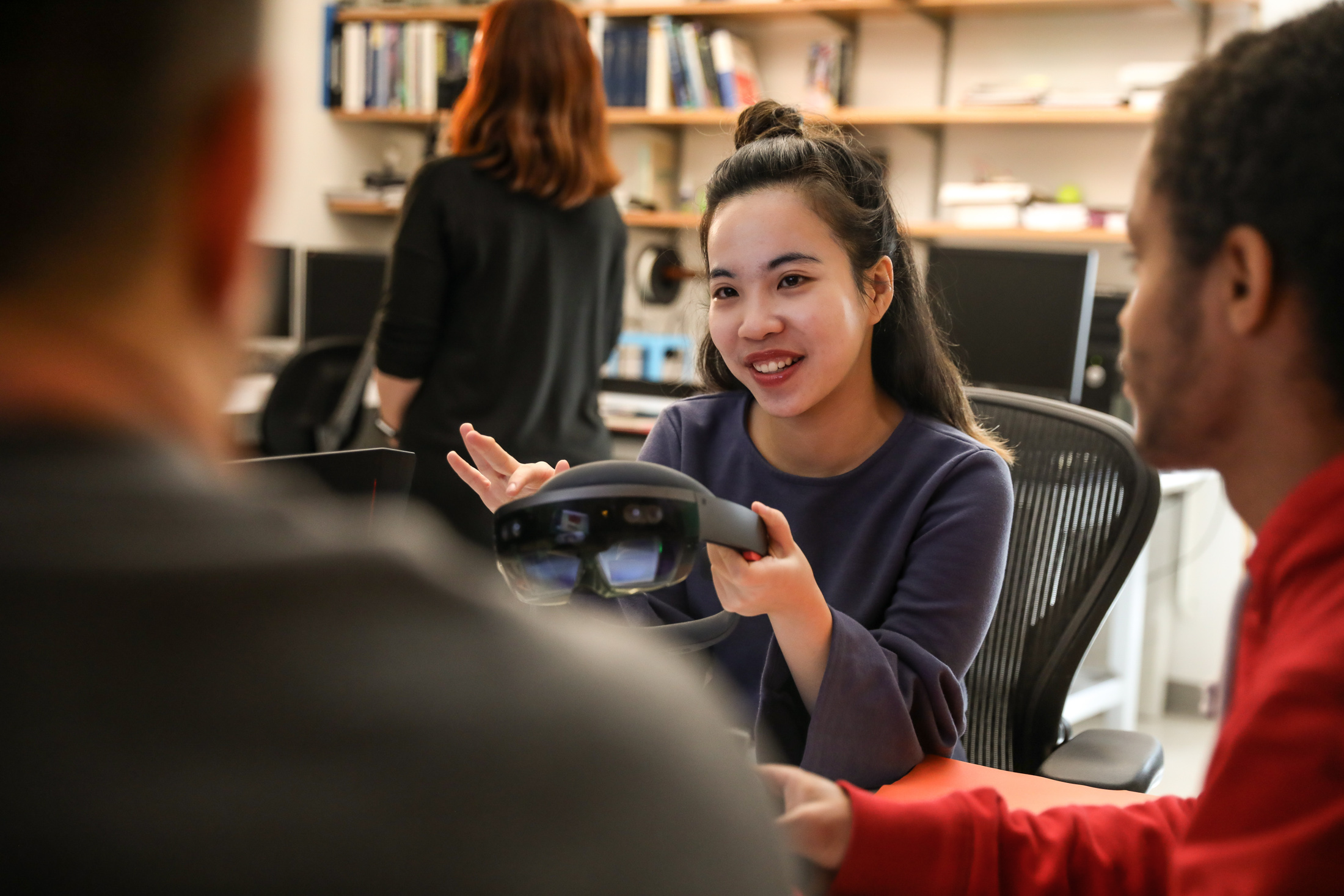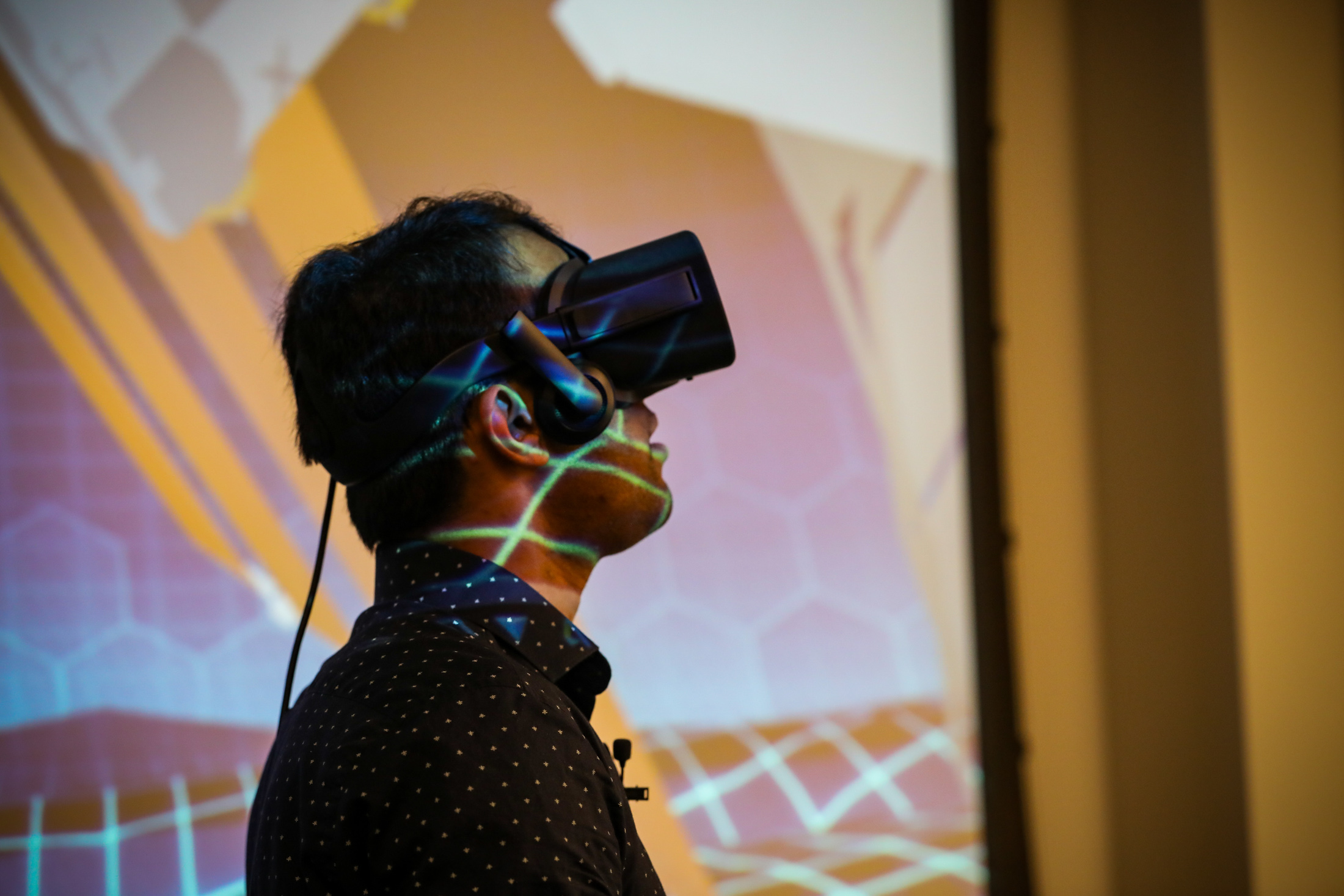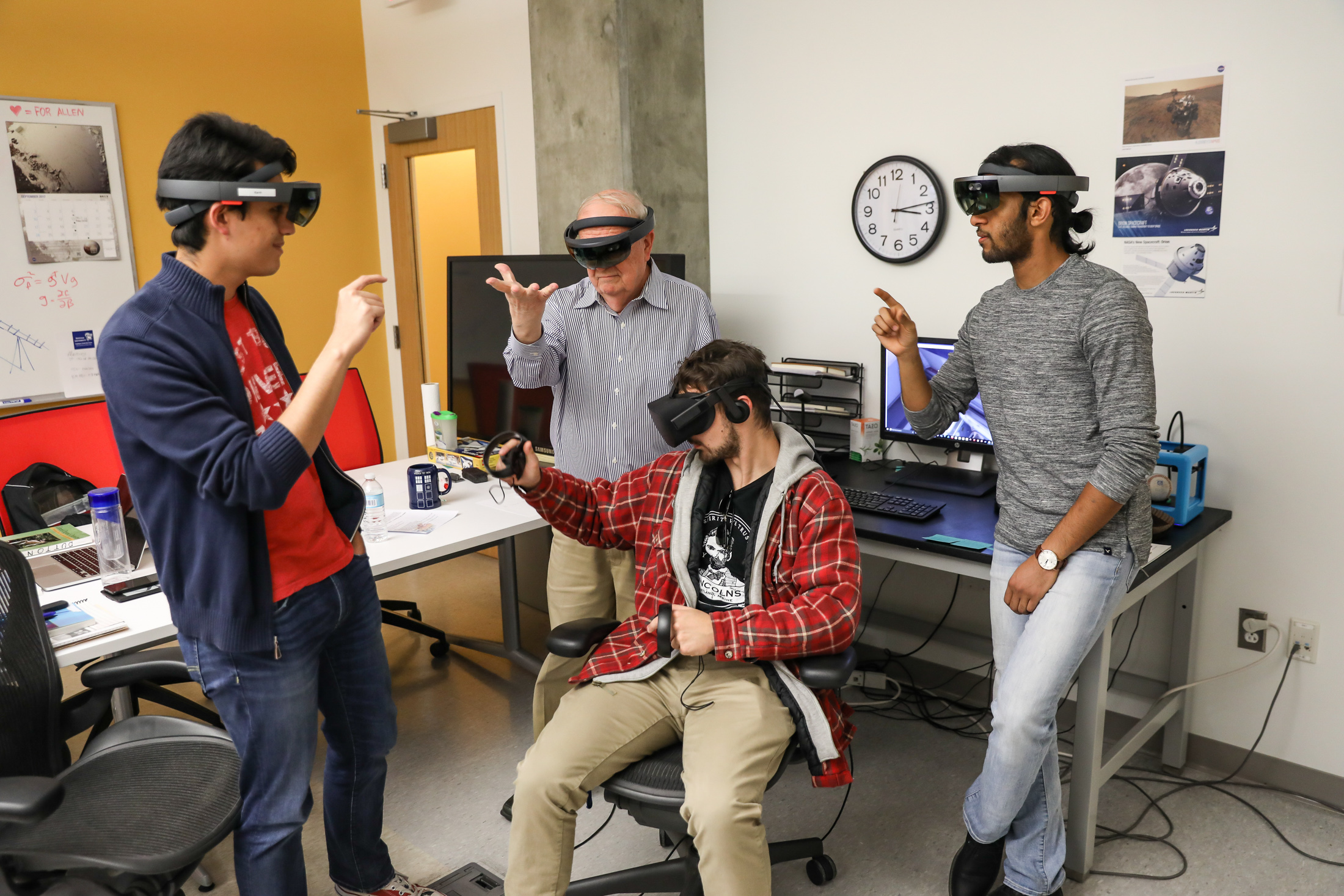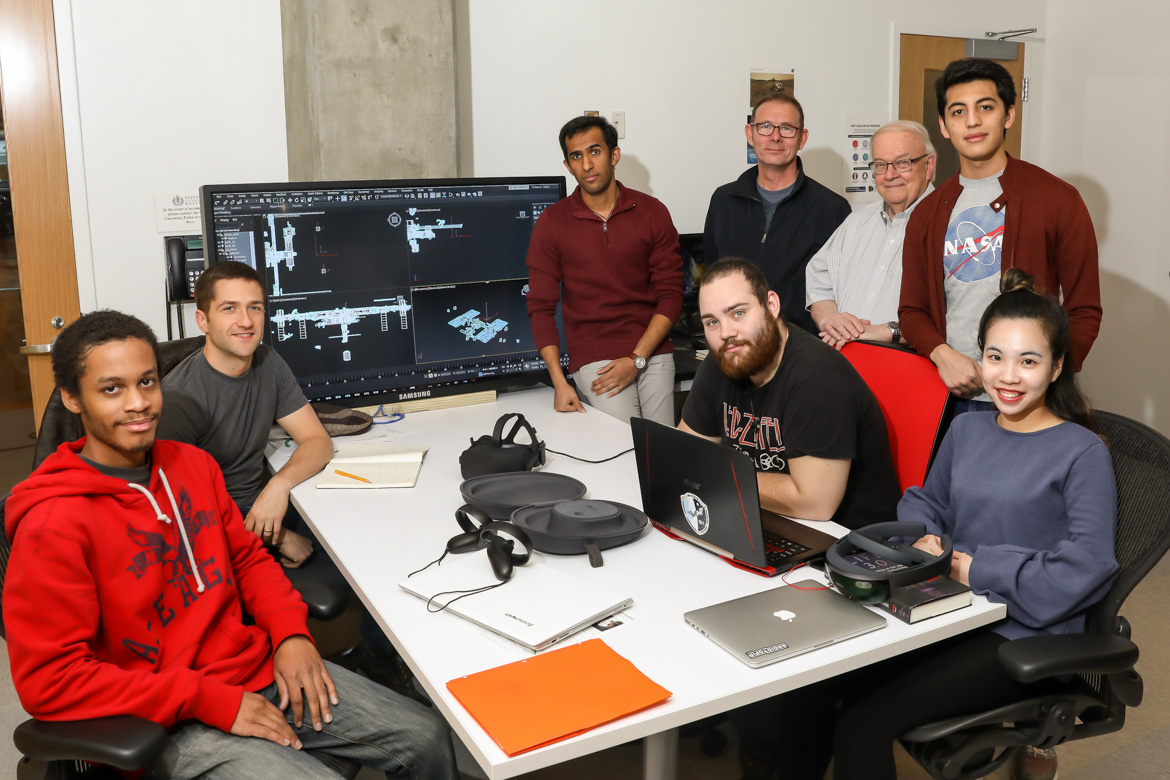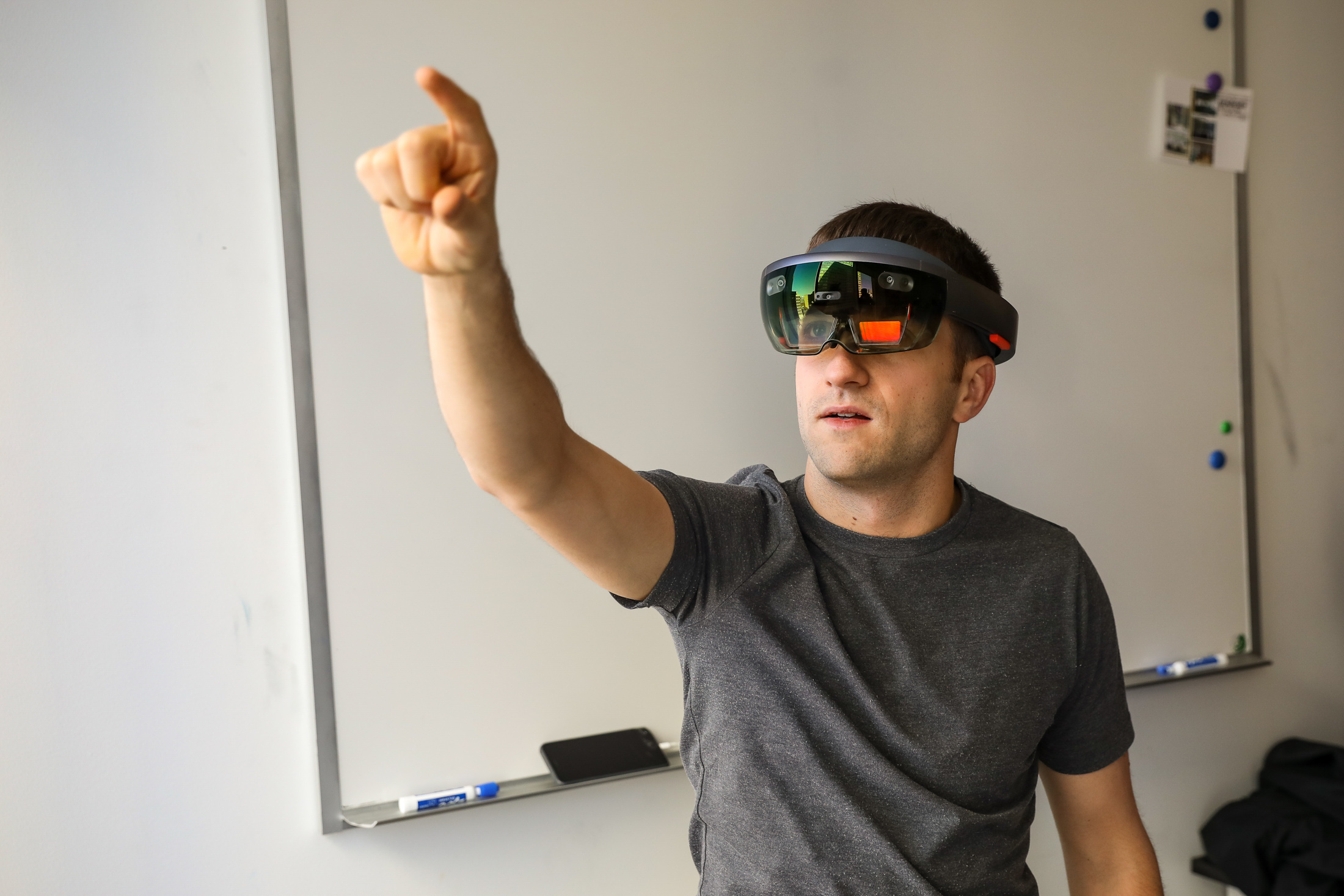Now two of Solley’s graduate students are using Google SketchUp to design entire buildings that are accessible via the HoloLens. By donning the headset, the designers can take clients through the furnished building floor by floor.
“It’s a very inclusive technology,” says Solley. “It engages more people in how the end outcome or the output of design is created. It is experiential, and that’s an important aspect of what we do as designers.”
Graphic design junior Anh Nguyen has spent the semester mastering the multiple reality design tools with the physics students. As part of an independent study, Nguyen is using her artistic talents to create holograms that help illustrate complex physics concepts. Johnson then uses Nguyen’s holograms as teaching tools in his classroom. It’s a cycle of cross-disciplinary learning that benefits everyone.
“People think that art students just like drawing and painting,” says Nguyen. “Now I can imagine myself having a job working with science.”
Into the future
In the past few months, Johnson has worked with faculty in physics, biology, chemistry, art & design, and engineering. He has lost track of all the demos he has done for faculty and administrators across campus, but his enthusiasm for expanding the use of multiple reality tech has only grown.
“It’s like being at the start of computers,” says Johnson. “Mixed reality technology is developing rapidly, getting better and cheaper with each new innovation. We’re in on the ground floor.
“The applications are in medicine, in law, in research, in business, design, history, English, you name it. You’re gonna see this everywhere.”




